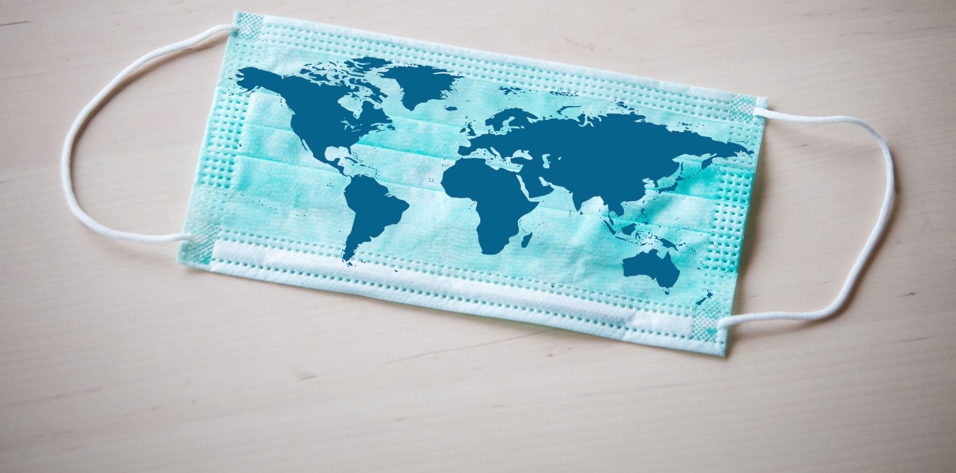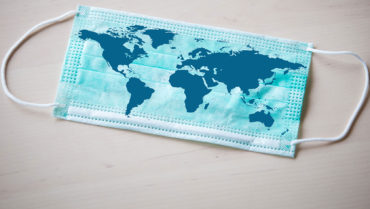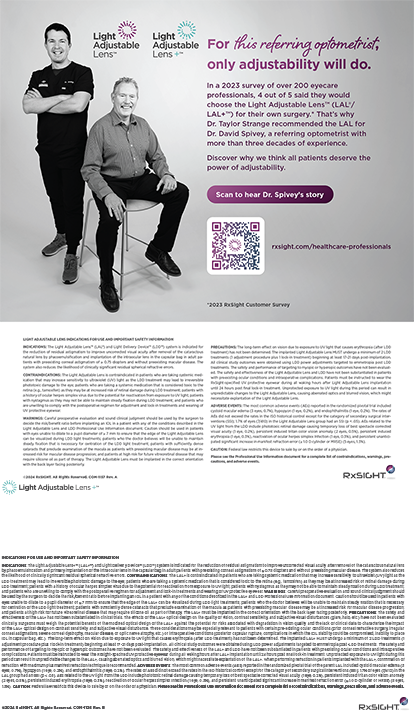
We watched complacently from afar as COVID-19 took hold of Wuhan, China. After all, we had seen many foreign outbreaks in our lifetimes—surely this would not similarly affect the United States. Then it hit Italy and Iran with the full force of a tidal wave, but there was still a pond between us. Finally, the waves washed up on our shores, and the sobering realization hit: The storm was coming, and we were already behind.
That first week after COVID-19 cases were initially reported in the United States felt like a lucid dream. News started to trickle in that, this time, things would be different. Still, for ophthalmology residents like me, it was difficult to pay too much attention, not knowing if or how we would be affected. We maintained our routines, saw patients, and studied vigorously for the upcoming OKAPs.
changing policies
Despite the frightening news headlines and panicked messages from friends and family, COVID-19 remained a faint whisper of anxiety in the back of our busy minds. Then the deluge of emails began, with hospital policies changing by the hour. And finally, the inevitable: An employee had tested positive for the virus. For a moment, we stood frozen in time.
At Massachusetts Eye and Ear, what came next was an incredible feat of leadership. Seemingly overnight, our department split residents into two teams. Team A would work for a continuous week, while team B remained at home to catch up on sleep, research, and studying and simultaneously prevent exposure to the hospital for an entire week. Interactions with anyone from the opposite team were forbidden, limiting the possibility of transmitting COVID-19 between teams and allowing us to continue serving five hospitals as patients and clinicians inevitably became infected. Prior to the AAO’s officially postponing OKAPs and, most important, before its statement urging ophthalmologists across the country to cancel clinics, our institution moved forward with speed and determination, cancelling clinics, postponing elective surgeries, and ramping up staffing in our ophthalmology emergency department.
Soon, stories from other countries began to surface. Ophthalmologists-turned-ICU physicians pleaded with the world not make the same mistakes. Globally, more hospitals began to overflow with patients, respirators began to be rationed, and one clinician after another started succumbing to the disease. We watched from afar as our Italian, Iranian, and Chinese counterparts became protagonists in a postapocalyptic novel whose pages were bleeding quickly into real life. Attendings began to ask: Are you ready to be an ICU resident?
As ophthalmologists, we pride ourselves on our ability to straddle two worlds. Our highly specialized training allows us to meet the complex medical and surgical needs of our patients, but our roots will always be as medical doctors. We took an oath and will step forward when called upon. Still, we never thought we’d be sifting through our closets in search of our retired stethoscopes. (Let’s be honest, no one is auscultating their carotid-cavernous fistulas.) But this is the new normal, and we are bracing ourselves for what, weeks ago, seemed impossible.
Personal protective equipment and COVID-19 exposure
Quickly, the first week turned into the second week, and everything came to a halt. The hospitals, much like the streets, were empty. All surgeries were canceled, and, for the first time, both our eye ER and the ER next door were quiet. Unspoken anxiety filled the air. News started to circulate that we were already short on personal protective equipment. We were asked to use only one mask per shift and carefully store our masks for future use. Test kits became a commodity reserved for the extremely sick. Policies shifted from having clinicians with known COVID-19 exposure stay home from work to the sobering realization that such policies would take out the entire workforce. My husband, an emergency medicine physician, has had multiple unknown exposures but has not stayed home. Instead, he wears his single allotted mask during his shifts and monitors himself daily for symptoms.
communication with patients
We ophthalmologists scurry to see our sickest patients first to avoid having them leave the house again. We counsel every patient to heed warnings and stay home. We try to impart to them the severity of the upcoming months and the uncertainty surrounding its duration. We tell them we will get through this together and ask them to call with any questions. We offer words of comfort, as much to ourselves as to them.
Perhaps most disturbing at this stage is the ongoing cognitive dissonance of society and, as a result, of our patients. Patients called us, frantically cancelling all future appointments. Others demanded to be seen, brushing off “the outbreak” as news-driven overdramatized hype. This mentality was reflected in the media with headlines such as, “Millennials Aren’t Taking Coronavirus Seriously.”1
But I see millennials taking COVID-19 seriously everywhere I turn. I see my fellow residents tirelessly screening charts to see which patients risk vision loss without immediate treatment and which can be rescheduled. I see them supporting each other on complex consults and running the eye ER, despite the visceral fears we share about infection. I see my husband and his colleagues exposing themselves to high-risk intubations with dwindling personal protective gear. I see my friend, an ICU nurse, pregnant but going to work and sacrificing her own needs for the needs of others. Many millennials are also the determined faces at the grocery stores, stocking shelves so that older, sicker colleagues can stay home. We are your police force, your developers, your delivery services, and your warehouse workers. We are portrayed as faces in the shadows, when, in reality, many of us are pushing forward on the frontlines of this battle.
We entered the job market at the height of a great recession, and now we enter a new stage of life (parenthood for some) on the eve of a pandemic. I am in awe of the strength of my millennial family, friends, colleagues, and husband. Millennials have faced these adversities with resilience, and we need that resilience more than ever before.
Standing together
As ophthalmologists, we are all too aware of the young ophthalmologist from Wuhan, Li Wenliang, MD, who tried to warn the world about the virus and subsequently lost his life to it. I anxiously head into work each morning, hoping that societal efforts to flatten the curve are truly working. We stand together, if no longer in physical space then in mental grit, embracing stillness as we await the impending storm.
1. Gunia A. Millennials aren’t taking coronavirus seriously, a top WHO official warns. Time. https://time.com/5807073/millennials-coronavirus-who/. Accessed April 27, 2020.




